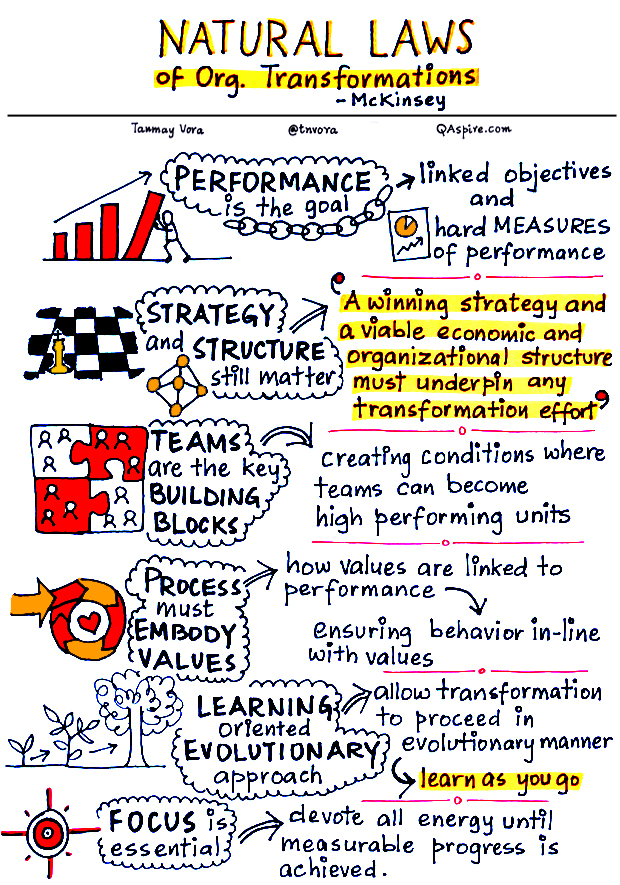Natural Laws of Organizational Transformation
Tanmay Vora
Organizational transformation initiatives come in many forms – restructuring, cultural transformation, service transitions, rapid innovation, process overhauls, turnarounds and acquisitions to name a few. Studies by universities and consulting firms suggest that 70% or more of transformation initiatives fail.
I have been a part of systems that were transformed, companies that were acquired, companies that could not pull of a successful transformation and the ones that did. My observation is – a majority of transformation initiatives fail because of lack of system thinking.
“With discrete initiatives across the organization, you may get change. Transformation requires systems thinking.”
As you think across the connected components of a system, you see interconnections that you did not even know existed. Taking time to map these interconnections is vital to create a well defined transformation context.
Natural Laws
I stumbled upon a 1993 McKinsey article titled “Leading Organization Transformations” which offers some timeless lessons and approach on how to lead organization transformations. I particularly liked the section “Natural Laws of Organization Transformation” which provides a broad guidance on the underlying principles. I feel that these natural laws are as relevant today as it were in 1993.
The authors say,
“Effective management “conversation” about performance improvement achieved through transformational efforts reveals that the specific techniques employed matter less than does adherence to a set of underlying principles.”
If you are planning an organizational transformation or undergoing one (which is very likely), I recommend you read this classic McKinsey article.
While reading the article, I create a quick sketch note to make the sense of these principles.
